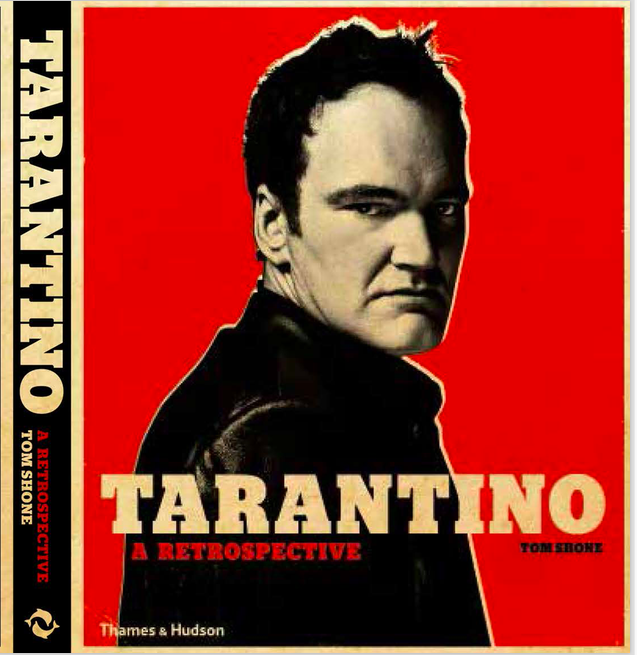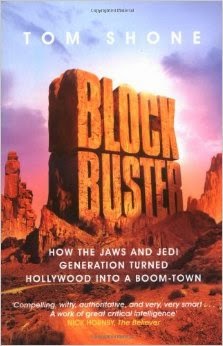skip to main |
skip to sidebar

“Despite the artificial nature of the film it still speaks with uncommon poignancy to the exile condition” writes Noah Isenberg in ‘We’ll Always Have Casablanca: The Life, Legends and Afterlife of Hollywood Most Beloved Movie, (Faber, $25), a devoted history of the film and its after-life in countries like Hungary and West Germany, where uncut version of it circulated like samizdat. Nearly all of the 75 actors and actresses in the film were immigrants hailing from more than 34 different nations. Bogart was the lone American; you also had Bergman (Sweden), Claude Rains and Sydney Greenstreet (England), Paul Heinreid (Austria), Conrad Veidt (Germany) and Peter Lorre, originally from Slovakia by way of London who said they changed countries “oftener than our shoes”. Hungarian S Z Sakall who played the head-waiter lost three three sisters to the concentration camps. Director Michael Curtiz, himself a Hungarian jew, personally cast them all, incorporating some of their stories into the movie: the trading of jewellery for exit visas, the presence of pickpockets. There were so many German jews playing the very Nazis they had fled that German was frequently spoken on set, which was known as the International House. When the time came for the scene in which defiantly sings La Marseillaise, one character actor noticed everyone was crying. “I suddenly realized they were all real refugees.”
It’s customary to regard the release of the film on November 26, 1942, less than three weeks after Patton’s forces landed in French North Africa, prompting Churchill, Roosevelt, and de Gaulle to issue the Casablanca Declaration, as the one of the greatest publicity coups ever to befall a film — ”General Eisenhower has merely serve then well as an advance agent” remarked The New Yorker. The the original play on which it was based, Everyone Goes to Sam’s, by jewish teacher and playwright Murray Burnett, was a piece of opportune reportage. In the summer of 1938, Burnett and his wife took a tour of Europe as it geared up for war. They found Vienna rife with anti-Semitism and, on the road to Monte Carlo, a smoky nightclub with a black pianist working old standards to audience of refugees and military officials of every nationality — “a great contrast to the tragedy and tears,” wrote Murray. The film’s timely dramatization of Bogart’s change of heart, “at first wary and independent, then changing incrementally until it headed in the opposite direction” in the words of Bogie’s most recent biographer Stefan Kanfer, would prove definitional for America: a big block of national myth as hefty as its founding. Another cafe serves as creative nexus-point in Alan K. Rode’s doorstepping new biography of director Michael Curtiz: Cafe New York in Bupabest, a rowdy 24-hour bohemian hang-out not far from the Danube where the young film director Mihály Kertész mixed with artists and card players, film writers, fakers and physicists — “everyone knew everyone” in the words of film historian Lazslo Kriston, “they all screwed the same chorus girls and got drunk together and worked and argued”. As a child Kertész slept four in a room with his brothers and as a teenage acrobat, developed great physical agility. When snapped up by Warner Brothers for one of his silents in the summer of 1926, he spent ten days living at a Los Angeles county jail to learn about the criminal justice system in time for his first assignment, a thriller called The Third Degree. “When I finish I know more about jail system and American Criminals than the technicolor director they pay big dough to tell me about such things,” he said in his pigeon English, “a source of joy for all of us” said David Niven during the shooting of The Charge of the Light Brigade. A sign hung on the door of Curtiz’s soundstages read: “Curtiz spoken here.”
About the only upside of being bawled out by Curtis on set was that you frequently never understood him. “It would inaccurate to say that everyone on Curtiz’s set loathed him” writes Rode at one point, with damning fair-mindedness, the portrait of the director that emerges of a cruel and mercurial autocrat, a kind of Hungarian Otto Preminger, who drove his cast and crew to breaking point — The Charge of the Light Brigade killed at least three horses, the flood sequence in Noah’s Ark drew 38 ambulances. “He can be a real son of a bitch to the bit players” noted Bogart who threatened to walk from the set of Casablanca at one point unless the director “shut up.” Curtiz was no Schindler. Casablanca was the result of alchemy by acrimony, with the Epstein Brothers supplying its snappier dialogue (“I am shocked, shocked, to learn that gambling is going on in here”), its politics coming courtesy of Howard Koch, its love story and ending fleshed out by Casey Robinson, with ad libs from the actors (“Here’s looking at you kid”) while they stood waiting for the day’s pages to be handed over.“Casablanca is best described as cinematic magic that occurred accidentally on purpose,” writes Kode in pointed rebuke of film critic Andrew Sarris, for whom the film was merely the “happiest of happy accidents” and Curtiz “the most divisive exception to auteur theory”. Auteur Theory’s point-man in America, Sarris could no more countenance the idea that it might be the theory rather than Curtiz who is at fault, placing him in the “Lightly Likeable” category, than the old communist apparatchiks could conclude that it was communism that was at fault rather than the people. Curtis was a “cinematic genius” said screenwriter Robert Buckner who could “make a picture when he didn’t know what it was about.” How can you proclaim your boy an artist, his every work bearing his imprint as breath animates the body, when he is responsible for films as wildly different as the tough-knuckled Angels with Dirty Faces, the sweeping Charge of the Light Brigade, the effervescent The Adventures of Robin Hood, the svelte Mildred Pierce, and the most dearly beloved film of all time, Casablanca. Oh and White Christmas.'" — from my review for the New Statesman

'Legendary sound-man Walter Murch, who gave us those glorious quadrophonic helicopters in Apocalypse Now, likes to say that it wasn’t until the coming of sound that the movies discovered silence. What he meant was that you only really miss something when its gone — and it’s solid gone, as Balloo the bear used to say, in John Kasinski’s new thriller A Quiet Place. Kasinski also acts in the movie, playing a bearded father, opposite wife Emily Blunt, whom we first see treading barefoot around a disused supermarket, scavenging for prescription drugs for their older boy (Noah Jupe). They move with extreme care, on tip toes, using sign language to communicate. Why the caution? We find out when their youngest (Cade Woodward) makes the mistake of playing with a battery-powered toy space shuttle. Giant skittering mantis-like bugs who detect their prey by sound scythe into view and tear the boy to shreds. Make a squeak and you’re toast. When I first caught wind of this idea in trailers, I let out a small squeal of excitement and then, in spirit of the movie, quickly bit my fist. It comes so deliriously close to the hush with which thrillers are themselves received by an audience — all of us perched on our seats, ears and eyes peeled, not daring to make a sound. Movies make too much ruckus these days. The best thrills are always silent. Think of the silent heist in Rififi, or the silencer shoot-out in John Carpenter’s Assault on Precinct 13, or the way the Coens tipped us off to the presence of Javier Bardem’s murderer in the corridor with the sound of a lightbulb being gently unscrewed in No Country For Old Men. If I had to guess I would say Scott Beck and Bryan Woods’ idea owes something to that scene in Jurassic Park, where the short-sighted T Rexes come so close to the children their snorts ruffle their hair — a lovely idea, never fully explored but here given its full due.' — from my Sunday Times review

'The film’s premise is slipped on as gently as a straitjacket. Sawyer’s struggles to free herself ("This is all a terrible mistake!") only serve to tighten it even more. One night turns into one week. Allowed one phone call, she calls the cops, but her muttering about they’ll arrive any minute to free her render her indistinguishable from all the other nuts on her ward: a trashy, tampon-throwing Southerner (June Temple) who wears her hair in corn rows and promises to cut Sawyer up at night, or a opioid-addicted fellow patient Nate (Jay Pharoah) who whispers about the institute’s shady business model, designed to milk patients' insurance until it runs dry. “They got beds, you got insurance,” he says. We’ve been down this road before, in Sam Fuller’s Shock Corridor and One Flew Over the Cuckoos Nest, and Soderbergh’s own Side Effects, his Rooney Mara thriller of 2013 which had similarly pointed things to say about the Kafkaesque world of the short-term incarceration industry. This is the slighter film, no question — a quick-and-dirty psychothriller shot entirely on the iPhone 7 Plus, which foreshortens perspective, amplifies empty space and drills into Sawyer’s skewed, strung-out head-space — but it is as sharp as a splinter. It gets under your skin, thanks to its spidery cinematography and Foy’s performance, with its alternating gusts of fury and fragility. Foy doesn’t shy from making Sawyer abrasive, even a little bit of a bitch. And yet she remains eminently sane. Hence the title. How would an entirely rational actor act if everyone around them conspired to treat them as if they were a lunatic? Wouldn’t it drive them — you know, a little nuts?' — from my Sunday Times review

'The movie, like the book, is a curious mixture of sugar rush and pop-culture study session: you’re not sure whether you should be enjoying it or supplying footnotes. Take the opening race through a virtual New York, with Wade s in wing-doored DeLorean from Back to the Future —customized with KITT from Knight Rider— going up against, among others, Stephen King’s killer car Christine, the Batmobile and the A-Team van while a T Rex and King Kong take lunges at them down the cross streets. Your basic rush hour traffic. Wade wins by taking the entire track backwards, which not only summaries the the movie’s whole retro ethos but wins him the admiration of Artemis. (Olivia Cooke), a svelte anime hottie with punk-red hair, although as his buddy Aech (Lena Waithe), says “She could be a 300 guy living his his moms basement in Detroit. Think about it.” Sure, but don’t think about it too much. As someone says “reality is a bummer” and when Wade’s aunt goes up in smoke nobody bats an eye. This is Spielberg in audience gigolo mode, pleasuring his fanboy base with one climax after another to a jukebox of hits from Van Halen, New Order and Tears for Fears. That fluttering you can hear is the sound is a million nerd hearts making their way up to heaven. The book’s page-long encomium to masturbation is gone, although the suspicion remains that if the global population of OASIS users would have their collective goggles blown off it anyone asked someone on a date. At a nightclub, Parzival and Artemis boogie on down to ‘Staying Alive’ by the Bee Gees on a zero-gravity dance floor, only for Wade to have his heartfelt declaration of love gatecrashed by an invading fleet of thugs sent by Nolan Sorrento (Ben Mendelsohn), head of Innovative Online Industries, a company that wants to turn Oasis into a advertiser’s paddock. Everyone wants to rule the world. But a kiss? That knocks the world off its axis.' — from my Sunday Times review
























